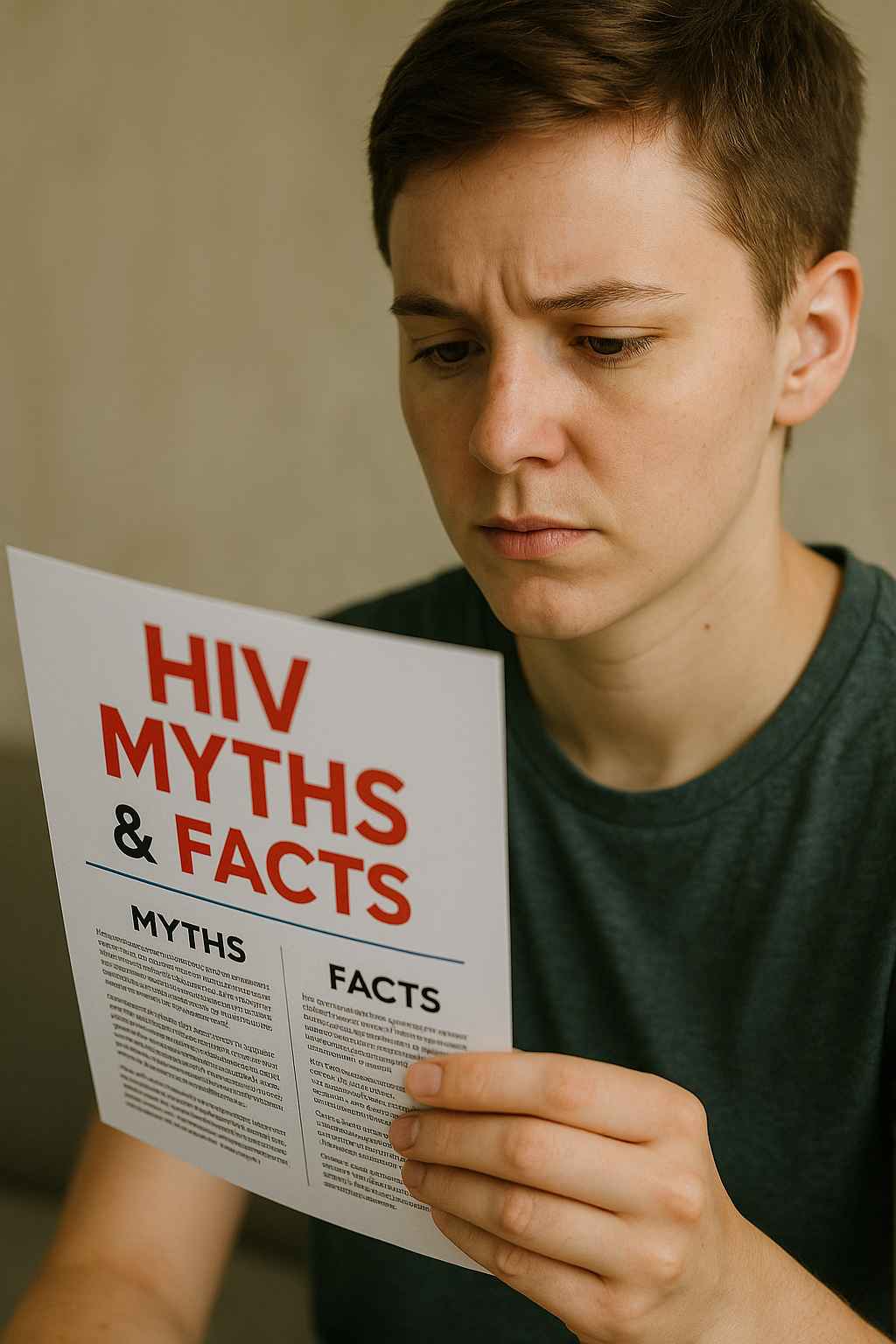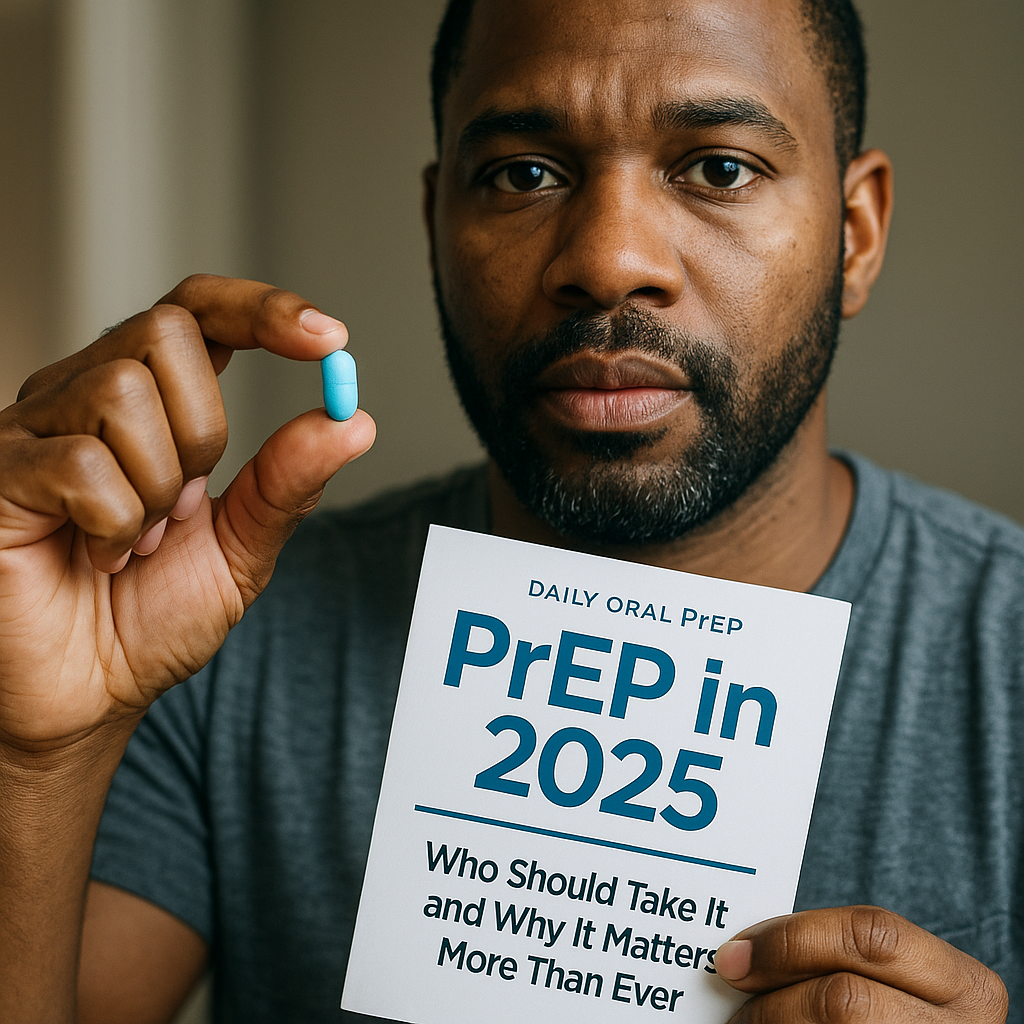
Despite decades of public health campaigns and scientific progress, HIV myths persist and continue to cause fear, stigma, and misunderstanding. Why do these misconceptions still exist in 2025?
Think of a rumor that spreads faster than facts—HIV myths work the same way. They often arise from fear, lack of education, or outdated information. Unfortunately, these myths can prevent people from getting tested, seeking treatment, or supporting loved ones with HIV. Understanding and correcting these myths is vital to stopping the spread of misinformation and encouraging compassion.
In this article, we’ll explore some of the most common HIV myths and replace them with accurate, science-based facts.
Table of Contents
- Myth #1: You Can Get HIV from Casual Contact
- Myth #2: HIV Is a Death Sentence
- Myth #3: Only Certain Groups Are at Risk
- Myth #4: People with HIV Can’t Have Healthy Relationships
- Myth #5: HIV-Positive Mothers Always Pass It to Their Babies
- Conclusion and FAQs
Myth #1: You Can Get HIV from Casual Contact
One of the oldest HIV myths is that the virus spreads through everyday interactions—like hugging, kissing, or sharing utensils. This misconception has caused unnecessary fear and isolation for many people living with HIV.
HIV cannot be transmitted through saliva, sweat, tears, or touch. It is only spread through specific bodily fluids: blood, semen, vaginal fluids, rectal fluids, and breast milk—and even then, transmission typically requires direct access to the bloodstream, such as through unprotected sex, needle sharing, or childbirth without treatment.
Modern research and CDC data confirm that casual contact is not a risk. Shaking hands, sitting on the same toilet seat, or using the same swimming pool poses no danger.
Correcting this myth helps reduce fear and promotes more inclusive environments in schools, workplaces, and communities.
Myth #2: HIV Is a Death Sentence
Another dangerous myth is that HIV automatically leads to AIDS and death. While this may have been true in the early years of the epidemic, it is far from the case today.
With early diagnosis and proper treatment—specifically antiretroviral therapy (ART)—people with HIV can live long, healthy lives. In fact, many individuals with HIV today have near-normal life expectancies.
Drugs like Biktarvy, Dovato, and Genvoya offer once-daily regimens that suppress the virus to undetectable levels. When someone’s viral load is undetectable, they cannot transmit the virus to others—this is known as “U=U” (Undetectable = Untransmittable), a fact supported by multiple global health agencies.
Even better, ongoing research into long-acting injectables and potential vaccines offers hope for even more effective treatment options in the future. You can find updates about treatment progress on AIDS.org’s blog.
Myth #3: Only Certain Groups Are at Risk
It’s a harmful myth that HIV only affects certain people—such as men who have sex with men, drug users, or people from specific regions. While some groups are statistically at higher risk due to social or structural factors, HIV does not discriminate.
Anyone who is sexually active or shares needles can contract HIV, regardless of age, gender, race, or sexual orientation. In fact, heterosexual transmission accounts for a significant portion of new cases worldwide. Women and older adults, once considered “low-risk,” now represent growing demographics in new infections.
Assuming someone’s risk based on stereotypes leads to missed diagnoses and further stigmatization. Healthcare providers now emphasize the importance of routine HIV screening as part of general health maintenance.
If you or someone you know has questions about testing or risk, it’s best to consult a provider through trusted sources like Healthcare.pro.
Myth #4: People with HIV Can’t Have Healthy Relationships
Some believe that having HIV disqualifies someone from having a fulfilling romantic or sexual relationship. This is one of the most emotionally damaging HIV myths.
The reality is that people with HIV can and do have healthy, loving partnerships—both with HIV-negative and HIV-positive individuals. When someone is on effective treatment and has an undetectable viral load, there is no risk of sexually transmitting the virus.
Modern tools like pre-exposure prophylaxis (PrEP), such as Descovy or Truvada, further protect HIV-negative partners. Open communication, mutual respect, and regular medical follow-ups make these relationships entirely manageable.
Moreover, emotional support and connection are essential to mental health and well-being, especially for people living with chronic conditions. No one should feel unworthy of love or intimacy because of their HIV status.
To learn more about how relationships and HIV intersect, explore topics on AIDS.org, where we dive deeper into dating, disclosure, and support.
Myth #5: HIV-Positive Mothers Always Pass It to Their Babies
This myth once had merit, but medical advances have changed the story dramatically. With proper prenatal care, HIV-positive mothers can give birth to HIV-negative babies.
When a mother takes ART throughout pregnancy and delivery, and the newborn receives preventive medication for a few weeks after birth, the risk of transmission drops to less than 1%. In cases where the mother maintains an undetectable viral load, the risk is virtually eliminated.
In some countries, where breastfeeding alternatives are safe and accessible, formula feeding is encouraged to prevent transmission. In others, ART during breastfeeding also helps minimize risk.
Pregnancy planning, early testing, and continuous care are key. Dispelling this myth allows women living with HIV to envision motherhood with confidence and support.
For more details about HIV-related questions, including reproductive health, visit our FAQs page at aids.org/aids-faqs-p.
Conclusion and FAQs
Misinformation can be more dangerous than the virus itself. HIV myths contribute to stigma, delay treatment, and isolate those affected. By confronting these misconceptions with facts, we create a more informed, compassionate, and proactive society.
HIV is not a punishment, a barrier to love, or a sentence. It is a manageable condition—and the more we understand it, the better we can support those affected by it.
FAQs
Can HIV be spread through kissing or sharing food?
No. HIV is not transmitted through saliva or casual contact. Kissing, hugging, or sharing food and drinks poses no risk.
Is it safe to date someone who has HIV?
Yes. With proper treatment and precautions like PrEP or condom use, relationships with HIV-positive partners are safe and healthy.
Can you get HIV from a mosquito bite?
No. HIV cannot survive in insects and cannot be transmitted by mosquitoes or other bugs.
Are people with HIV allowed to work or go to school?
Absolutely. HIV is not a reason to exclude someone from work, education, or public spaces. Discrimination is illegal in many places.
How often should someone get tested for HIV?
Experts recommend at least once a year for sexually active individuals, and more frequently if engaging in higher-risk behaviors.
Disclaimer
This content is not medical advice. For any health issues, always consult a healthcare professional. In an emergency, call 911 or your local emergency services.



